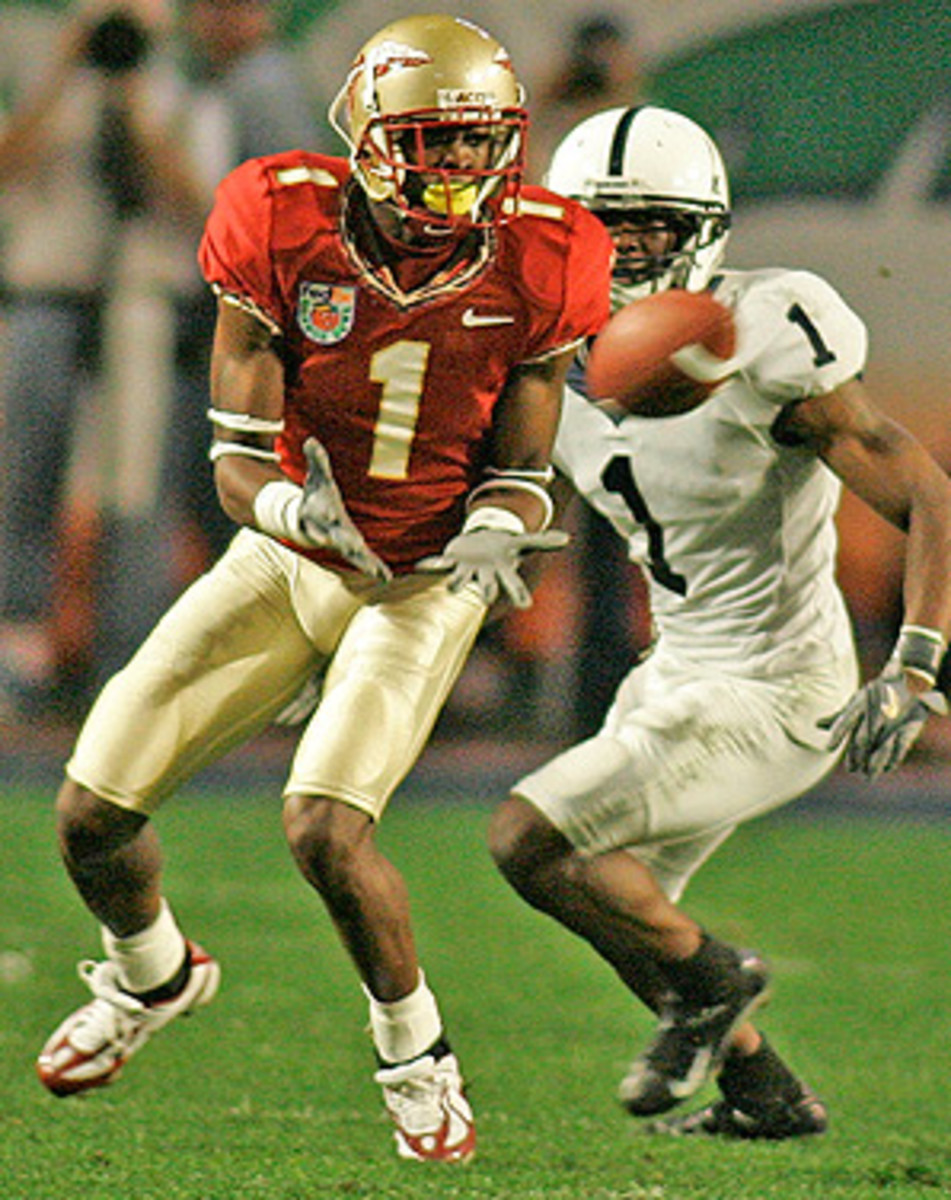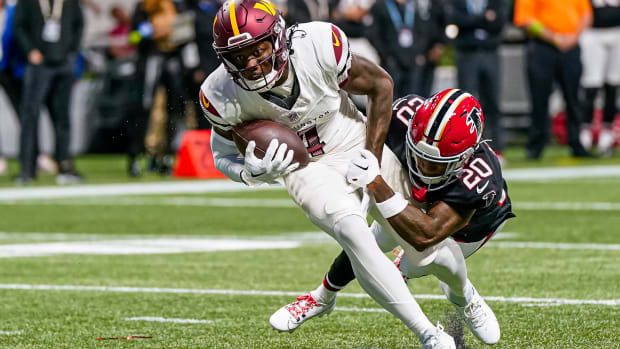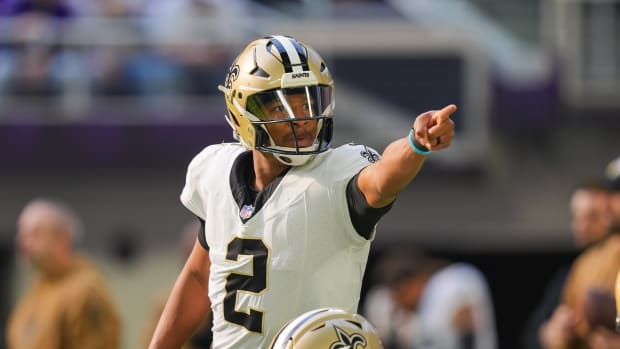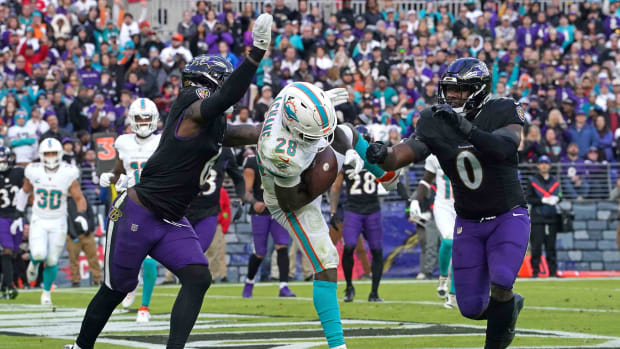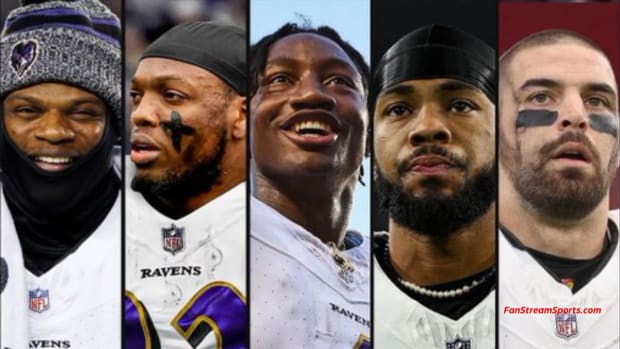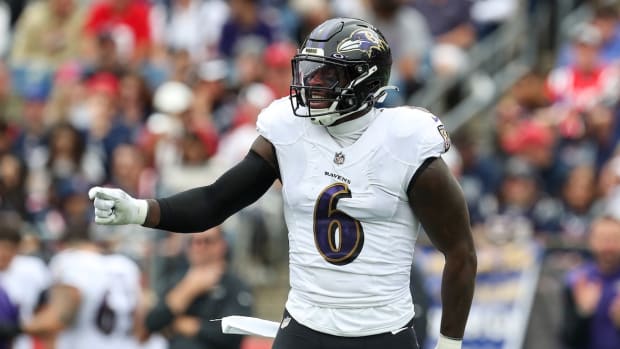Five compelling prospects who took unconventional routes to NFL draft
Here are five such sagas that have caught my attention during the pre-draft scouting season:
FRED ROUSE, WR, Concordia College
Fred Rouse hears it all the time, and by now knows the questions by heart. When his vaguely familiar name starts to register with fans he encounters, the same queries invariably come his way: "They say, 'Are you that Fred Rouse? Then they say, 'Where you been?' ''
It's not an easy road map to draw for someone, but Rouse, the receiver who was christened "the next Randy Moss'' when he arrived as a five-star recruit at Florida State in 2005, does the best he can to sum it up succinctly.
"I always say I had some screw-ups, but now, man, I'm a different person,'' Rouse said. "People change. And I'm proud of my turnaround.''
There's falling off the radar screen in college football, and then there's the Fred Rouse experience. From Florida State and starting in the Orange Bowl, to the University of Texas-El Paso, to starring for tiny Concordia College in Selma, Ala., for the past two seasons. And that was only the football side of the story. Rouse was kicked out of FSU for failing multiple drug tests for pot (he apparently took the Moss comparisons a bit too literally), left UTEP on his own, and wound up doing 60 days in jail back in his hometown of Tallahassee for violating the probation he received for being convicted on a breaking and entering charge.
But somehow Rouse is still chasing his NFL dreams at 25. He has enough baggage to fill an airplane cargo hold, but he also still has obvious talent, and teams have taken note of his skills in the past two months, including his work at Tom Shaw's well-known performance training center at Disney's Wide World of Sports near Orlando.
"He probably had all the answers at one time when he was younger, but he's opened his mind now and heard what people have been trying to say to him,'' said Shaw, who runs a training program that boasts such participants as Jets receiver Santonio Holmes, former Packers receiver Javon Walker and Steelers cornerback Ike Taylor. "If you Google him and read about his past, and then meet him for the first time, the two impressions don't line up. That's not the young man you get today.
"I don't have a draft pick, but I'll tell you he can definitely stretch the field. He's a big, fast and strong receiver, he has great hands, and he's not afraid. He's that kind of kid. He'll go get the ball. If he was 21, and leaving FSU having never had any problems, you'd be talking about him in same breath with top receivers in this draft. But he can't forget what he did. It almost cost him everything. He understands that and knows if he's going to get a chance to play again, he's got to be perfect.''
Rouse got a chance to work out before some NFL scouts at Troy University's pro day last month, measuring in at almost 6-foot-2, 200 pounds, with a 40 time reported to be in the 4.4 range. One scout told me Rouse worked out well and excelled at catching the ball. "If you didn't know anything about his whole story, you'd say he's kind of interesting,'' the scout said. "But it's kind of a tale of squandered talent, judging from where all he has been.''
Rouse knows plenty of NFL teams will red-flag him with his background and lack of recent big-school production. But I've also been told there are some clubs that have identified him as a priority collegiate free agent, perhaps preferring that he remain well under the radar in this pre-draft season. Rouse just wants to get to an NFL training camp to take his last, best shot of turning his career around as well as he has the rest of his life.
"I was a kid with a tremendous amount of talent, but no guidance at that time,'' Rouse said. "It was a long learning process for me. The red flags will be raised and the only thing I can do is be honest and say, 'Yeah, I did it, and I did that, too. But I'm a guy whose body is still ready to go. I still can go, and the motor is still running. After five years, a lot of guys would have given up and said, 'This is not for me.' But I'm driven to try and correct my mistakes. I know it's still there. It's just a matter of convincing a team to take a chance on me. Convince them that I can be that turnaround guy.''
DANNY WATKINS, OL, Baylor
Growing up a hockey player in British Columbia, Danny Watkins lived for Hockey Night in Canada and the Vancouver Canucks. The closest he got to football was watching the occasional CFL highlight and playing a little rugby in high school. After graduation, he aspired to a future in fire fighting, spending four years working in that risk-filled field before ever picking up a football.
"That's what I wanted to do,'' said Watkins, the All-Big 12 Baylor offensive lineman who at 26 has to be this year's oldest draft prospect. "But things [in football] have taken off.''
Watkins enrolled in Butte College in Oroville, Calif., in 2007 to attend the school's fire academy. But football somehow intervened, and after two successful seasons at the junior college, he was recruited by Baylor as a replacement for All-America left tackle and 2009 first-round pick Jason Smith, of the Rams. Less than 24 months later, Watkins is considered a decent bet to follow Smith's path to the pros, projecting as a late first-round selection. Teams like the No. 30 Bears and No. 31 Steelers are thought to have him squarely in their sights.
NFL scouts I've talked to rave about Watkins and his NFL potential. They don't seem to hold his age against him (he'll be 27 in early November), because offensive linemen can often play well into their late 30s. He may be a relative novice at football, but he's obviously a quick study, no matter what the field.
"Well, I don't have arthritis,'' Watkins said, laughing at a question about his age. "I feel pretty good. I was one of the first guys out of my physical [at the NFL scouting combine]. I'm a little more mature than the other guys. I don't think it's a negative.''
Neither does the NFL. At a shade under 6-4, and 312 pounds, Watkins might start off by moving to guard in the pros, and he worked inside at this year's Senior Bowl. But some teams believe in time he'll be up to the task of handling the high-profile left tackle role, and maybe sooner than most expect.
It's his hockey experience, he says, that has prepared him for playing football in the trenches. "There's a lot of knee bend, and the way you put your feet in the run game is similar to skating,'' said Watkins, who was drafted by the CFL's B.C. Lions as the fourth overall pick in 2010. "Obviously, moving backwards in hockey was very natural to me and in pass protection. A lot has been able to carry over to my benefit.''
RICARDO LOCKETTE, WR/KR, Fort Valley State
For a guy who loves the fast lane, Ricardo Lockette was forced to learn some patience when his plan for Division I stardom at Auburn got sidetracked by his academic shortcomings. Instead of playing with Cam Newton on last season's national championship squad, Lockette toiled in relative obscurity at Fort Valley State, with the Georgia-based Southern Intercollegiate Athletic Conference school being a far cry from the bright lights of the SEC.
"I didn't make my SAT score,'' said Lockette, a receiver/return specialist and collegiate track star. "So I went to [Fort Valley]. But it worked out well. Everything happens for a reason.''
The NFL has seen plenty of track standouts who flame out in football, because straight-line speed only carries you so far in this league. But the Albany, Ga., native says he's more than just the latest sprinter trying to follow in the footsteps of Bob Hayes.
"I'm not just a track guy,'' Lockette said. "I've been playing football since I was six years old. Playing football has always been a childhood dream of mine. I've been practicing all my life.''
At Fort Valley State, Lockette became a Division II national champion in the 200 meters and a three-time All-America. After talking about his plans to break the NFL combine record of 4.24 in the 40-yard dash, Lockette ran a 4.37, which still tied for the fastest time turned in this year. His 2010 production in football was nothing special: 23 catches for 262 yards with one touchdown, and a 24.0-yard average kickoff return.
But the 6-2, 211-pound Lockette has some NFL-ready football skills, and NFL.com draft analyst Gil Brandt has compared him favorably to Colts receiver Austin Collie and predicted he could be one of the mid-round steals in this year's draft. As for Lockette, his speed and explosiveness off the line might only be matched by his self confidence.
"I want to show them that I'm a big-play kind of guy, like a Calvin Johnson or a Roddy White,'' he said. "I want to show them I'm an all-around player, not just a speed guy. I didn't get a chance to show them a lot of routes last year, so I want to showcase that.''
ANDREW PHILLIPS, OG, Stanford
I'm not sure I heard a more compelling story this draft season than the one belonging to fifth-year senior Stanford guard Andrew Phillips. He played the entire 2010 season, a most memorable one for Jim Harbaugh's Orange Bowl-winning Cardinal, with a heart burdened by family loss.
Early on the first day of fall football practice, Phillips found out that a plane carrying his father, Bill, and his 13-year-old brother, Willy, had crashed the previous night in the Alaskan wilderness. En route from California to Alaska, Phillips learned his dad had perished and his brother survived with at least three broken bones. Also on that ill-fated flight was former long-time U.S. Senator Ted Stevens of Alaska, who Bill Phillips once served as chief of staff. All told, five lives were lost.
Bill Phillips, 56, had been taking his youngest of four sons on a salmon-fishing trip with Stevens and others. Their single-engine floatplane flew into the side of a mountain in fog, with the survivors being trapped in the plane overnight. Willy, despite suffering a broken wrist and foot, with another fracture in his face, managed to escape the fuselage and wave to a rescue plane overhead early the next morning, perhaps saving the four survivors.
Phillips' other three sons, Andrew, Colter and Paul, all persevered through the tragedy and played Division I college football last season, with Colter (sophomore) and Paul (freshman) being tight ends at Virginia and Indiana, respectively. It is the family tradition, after all, given that Bill Phillips had starred as a 6-foot-7 defensive lineman at the University of Evanston. All three sons offered to leave school to come home and take care of their mother last summer, but Janet Phillips asked them to stay put, play and make the most of their collegiate football careers.
Andrew Phillips is considered a tough and intelligent draft prospect and a potential late-round pick. He's a two-time All-Pac 10 honorable mention selection and was a vital cog in a Stanford offensive line that has helped produce two of the three most prolific rushing seasons in school history. His senior season was a very good one on the field, and a heartbreaking one away from it. The NFL team that calls his name will be getting a young man and a player who has been tested in ways that transcend the game.
MIKE COUGHLIN, QB, Boise State
Maybe it starts with the initials they have in common, but it's hard to look at Mike Coughlin these days and not think of Matt Cassel.
You know Cassel's story. The former USC backup quarterback to Carson Palmer and Matt Leinart is now a well-paid and productive starter for Kansas City, having barely ever put down his clipboard while wearing a Trojans uniform in college.
Coughlin might be another Cassel, proving that collegiate experience is overrated. He threw just 28 passes while backing up Boise State star quarterback Kellen Moore the past two seasons, but suddenly an eye-opening showing at the Broncos' pro day last month has everyone in the NFL aware of Coughlin's strong right arm. Boise State coach Chris Petersen has extolled Coughlin to NFL scouts, and former BSU cornerback turned Dallas Cowboy Orlando Scandrick said recently that Coughlin was every bit the quarterback that Moore is, and would be a first-round prospect if he had been the starter.
At 6-5, 212 pounds, Coughlin has the size the NFL loves, and the quarterback-needy Seattle Seahawks were quick to reportedly schedule a pre-draft visit with him. He showed the ability to make every pass needed in the NFL while serving as the Broncos' pro day practice quarterback, and coaches such as Jacksonville offensive coordinator Dirk Koetter were said to be very impressed with his blend of skills.
All I know is that if the New England Patriots draft Coughlin in the seventh round, the rest of the NFL can't say it wasn't warned.
































